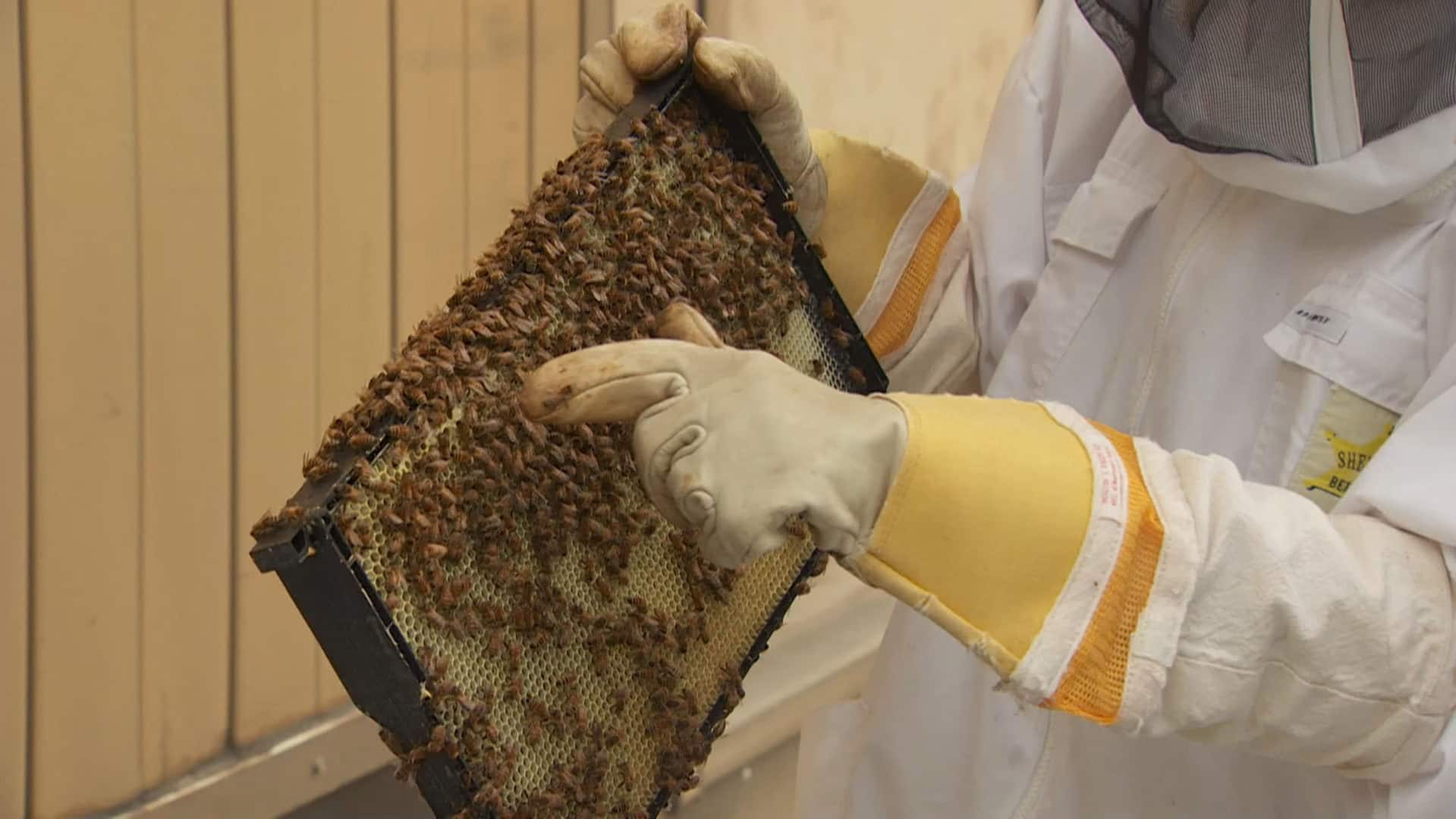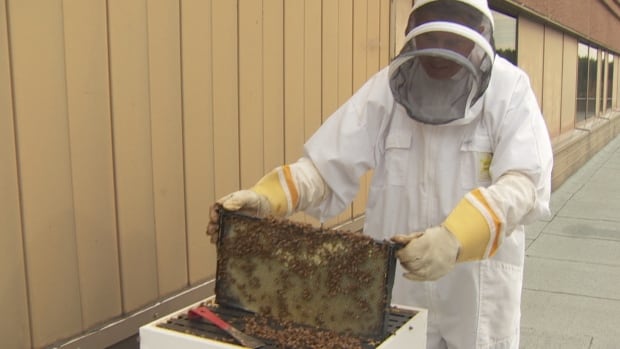
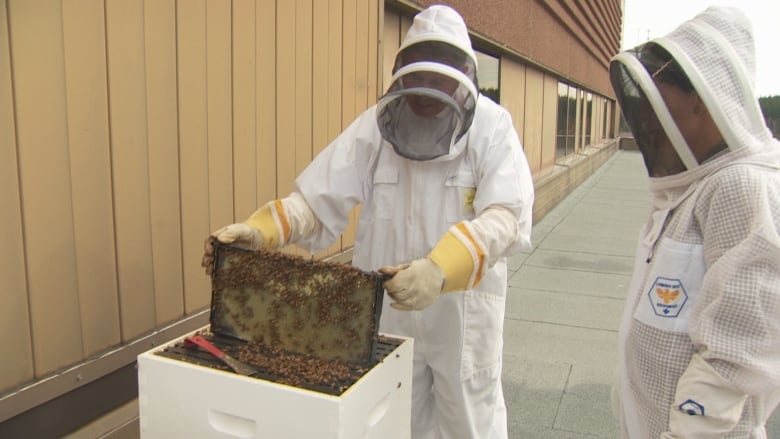
When life gets chaotic and you need a new perspective, slow down and consider the bees, says Dr. John Dornan.
“Bees have been around longer than humans,” Dornan said on the roof of the Saint John Regional Hospital. “Bees have been on the planet since flowers have been on the planet — 50 million years. It’s a process that’s continued through time.”
Not only that. Bees are critical to “helping keep our crops alive and sustainable,” he said. “Blueberries, for example. About 30 per cent of a blueberry yield depends on bee pollination.”
For more than two decades, Dornan, a medical doctor and endocrinologist, has also been an apiarist, as was his father before him.
WATCH | What’s the buzz about Dr. John Dornan’s bees?
New Brunswick physician and apiarist Dr. John Dornan finds parallels between his career and his hobby.
This year, he made headlines as Horizon Health’s president and CEO, a position he held for only four months before Premier Blaine Higgs publicly fired him in July.
“If we don’t get better management results in our hospitals, we won’t get better health care,” said Higgs, who dropped health minister Dorothy Shephard and revoked the boards of both Horizon and Vitalité health networks on the same day.
A stinging rebuke, one might say.
But Dornan preferred not to discuss that now. He continues to see patients at the hospital, but on this October afternoon, he was busy managing the beehives situated in an out-of-the-way corner of the roof of the Regional. Installed in spring 2022, the two hives contain about 120,000 bees.
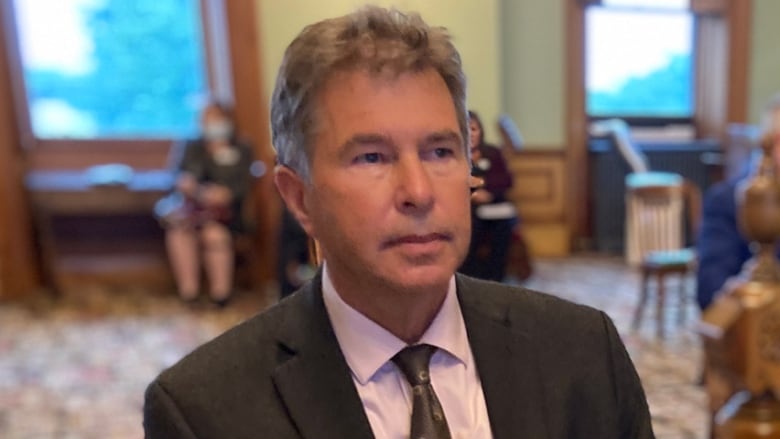
Dornan placed a separator between the upper and lower boxes of two beehives. Inside each hive are between eight and 10 frames onto which bees build comb from beeswax, filling the hexagonal cells with honey and larvae. Installing a separator forces the bees to congregate in the lower box, so that the upper frames can be removed and the honey extracted.
Later, “I’ll put each frame in a centrifuge, two frames at a time, and I’ll spin it,” Dornan said. “The honey will come out of the comb to the wall of the centrifuge down through the bottom.”
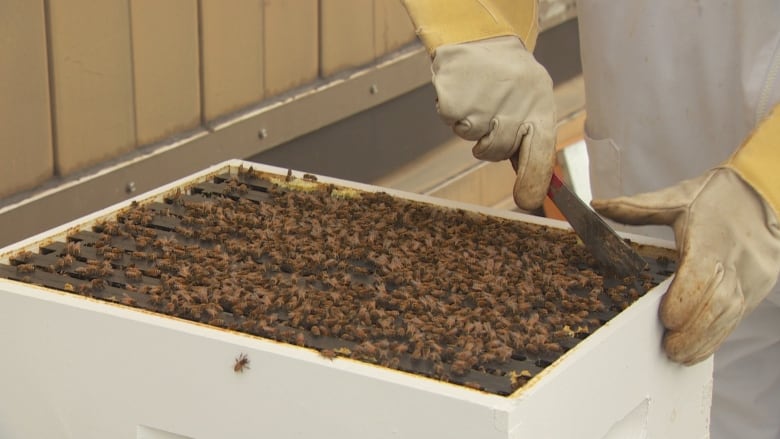
The volunteer beekeeping gig requires some heavy lifting.
Each frame laden with wax and honey weighs close to 10 pounds. There’s a no-smoking policy at Horizon, but “we make an exception for the bees,” Dornan said, as he deployed an antique bee smoker to make the insects more docile.
Right now, “they have a bit more work to do,” he said. “There’s only a little bit of capped-off honey and if you look inside here, a lot of it still liquid that is not capped off yet.”
When the bees have completed their work for the season, the 100 pounds or so of honey collected will be donated to Horizon to use for fundraising or gifts, Dornan said.
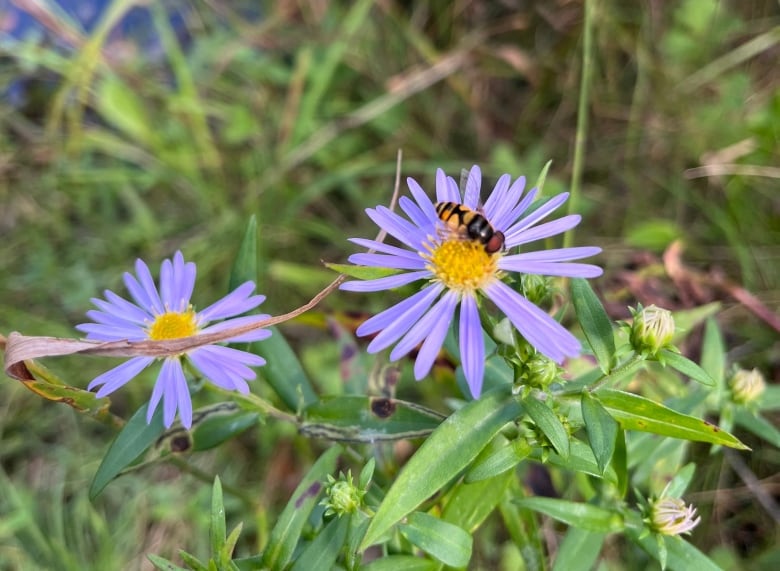
Trust the process
For best results in beekeeping, Dornan said, it’s important to trust the process.
“People have tried to get bigger boxes, different boxes, different systems that they hope will work better, but nothing works better than what they call the Langstroth hive,” he said.
“Sometimes, we need to change things, but sometimes we don’t. Sometimes it’s working.”
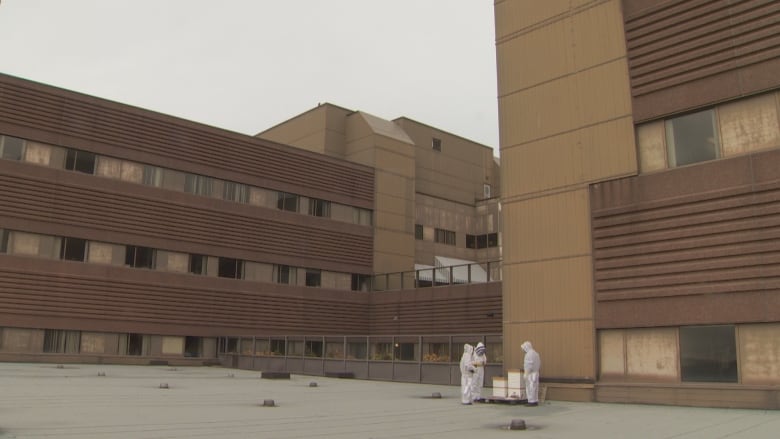
Chris Davey, an apiarist and vice–president of the New Brunswick Beekeepers Association, agreed that keeping bees, a process fundamentally unchanged for generations, is a natural way to benefit the environment
“They’re helping to pollinate the local fruits and flowers,” Davey said, adding that beehives in a community can “help make a more vibrant, healthy community with no sprays.”

The idea of businesses and workplaces installing beehives is “growing in the sense that even commercial businesses are trying to represent that natural, organic approach,” he said.
On a recent trip to Nova Scotia, he noted the IKEA in Halifax had installed hives in their backyard. Many others in Atlantic Canada, including CBC New Brunswick’s Fredericton office, have followed suit.
“The big setback is community bylaws,” Davey said. “A lot of communities have accepted it, others have resistance toward it. I think people need to embrace it. There’s power in numbers.’
To help, the New Brunswick Beekeepers Association offers mentorship to new beekeepers, Davey said, and holds workshops throughout the year.
Sweet satisfaction
Dornan said there are commonalities between beekeeping and his career in medicine.
Both are lifesaving professions, for one.
In summer 2022, preliminary data indicated nearly half of Canada’s honeybee colonies didn’t survive the winter, the largest rate of colony loss in the country in the last 20 years.
But the main similarity is that both are “very satisfying,” Dornan said. “I’ve always enjoyed my work as a physician [and] as administrator. At the end of the day I feel satisfied, and at the end of the day, it’s the same thing with these bees.”
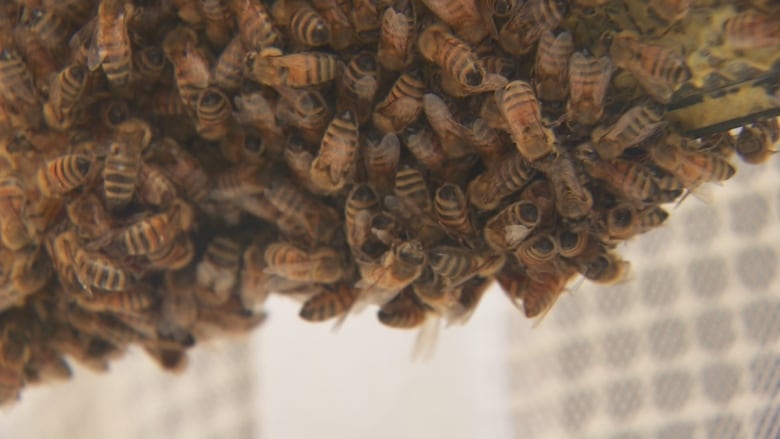
Just like people — bees also have different jobs throughout their lives.
“When they’re born, they’ll just work inside the hive: helping out, helping feed the young bees, helping make wax. Then as they get more mature, they’ll start to forage. They’ll go out into the environment and collect the nectar and the pollen and bring it back.”
As Dornan looks for “other opportunities that might fit my skill set here in the province or elsewhere, in health care, or not,” taking care of the bees at the Regional will remain a constant.
It’s about mutual respect, he said.
“I’ve learned in 23 years about patience and not meddling too much. When I’ve worked with a team, you can overdo it, you can micromanage.
“Some people go into the hive every other day, and you don’t need to do that. You’re just causing trouble. Just be patient [and] let the bees do what they do naturally.”
